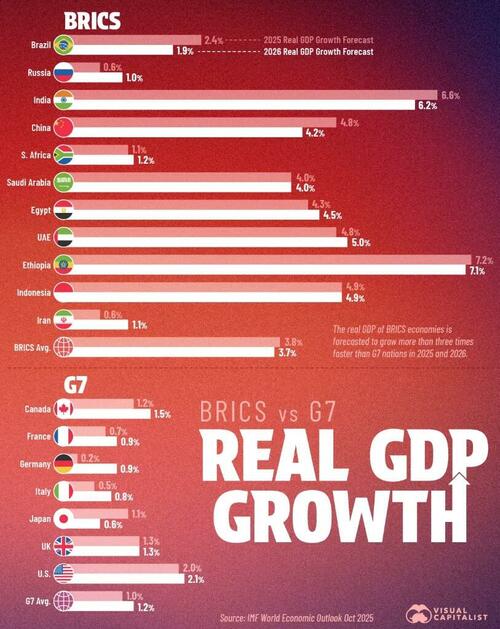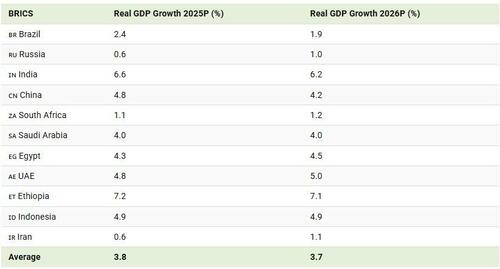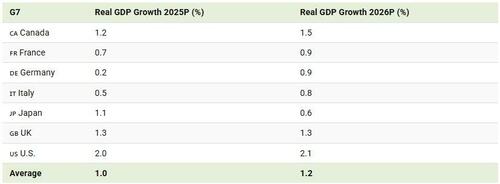BRICS Vs G7: Comparing 2026 GDP Growth Forecasts
Today, BRICS countries represent half of the global population, a coalition with growing economic heft.
Unlike many Western powers, many BRICS countries are seeing rapid GDP growth driven by significant investment, trade, and demographic change. In an increasingly multipolar world, this group is exerting more influence as it expands.
This graphic, via Visual Capitalist’s Dorothy Neufeld, compares real GDP growth projections of BRICS vs G7 countries, based on data from the IMF’s World Economic Outlook October Update.
BRICS vs G7 Real GDP Growth
Below, we show GDP growth forecasts for BRICS nations in 2025 and 2026:
As we can see, India is projected to see one of the fastest growth rates across the bloc, at 6.6% in 2025 and 6.2% in 2026.
In China, 4.8% growth is forecast for 2025 as the country strengthens trade across Asia, Europe, and Africa. Like India, growth is forecast to decline in 2026.
On average, BRICS growth will exceed G7 rates by more than threefold in both 2025 and 2026—a stark contrast visible in the table below.
With just 1% average growth for G7 countries, many countries are facing headwinds of aging populations and trade uncertainty.
Notably, Germany is forecast to see one of the world’s slowest GDP growth rates in 2025, rising just 0.2%. However, it is set to pick up to 0.9% in 2026—a trend mirrored in several other G7 nations.
To learn more about this topic, check out this graphic on BRICS share of GDP compared with G7 countries.
Tyler Durden
Tue, 11/04/2025 – 20:30ZeroHedge NewsRead More








 T1
T1


